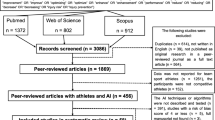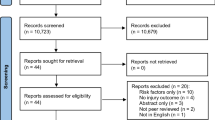Abstract
Anterior Cruciate Ligament (ACL) injuries often occur during dynamic physical activities which have sudden change of direction, sudden stops/brakes and jump landings movements. There is no self-healing in ACL injury. Even with a high-cost surgery, it requires a long recovery period. Thus, ACL injury risks screening application can bring a huge impact in sports science. This paper presents the development of ACL injury application using the Landing Error Scoring System (LESS). We propose an application to screen the risk of ACL injury using a hybrid system of Convolutional Neural Networks (CNN)-Expert method. We capture images of participant jump landing from 30 cm high box. These images are then fed into the CNN-Expert system model. 12 models are created and trained to classify the first twelve items out of the seventeen items in the LESS protocol respectively. The 12 models are then integrated into a system which and calculate the total risk score. The system yields a promising result with 70% of accuracy predicted risk level. Compared to the three-dimensional screening, the application is more convenient with less cost.
Access this chapter
Tax calculation will be finalised at checkout
Purchases are for personal use only
Similar content being viewed by others
References
Alentorn-Geli E, Myer GD, Silvers HJ, Samitier G, Romero D et al (2009) Prevention of non-contact anterior cruciate ligament injuries in soccer players. Part 1: Mechanisms of injury and underlying risk factors. Knee Surg Sports Traumatol Arthrosc 17(7);705–729
Boden BP, Dean CS, Feagin Jr JA, Garrett Jr WE (2000) Mechanisms of anterior cruciate ligament injury. Orthopedics 23(6):573–578
Sanna G, O’Connor KM (2008) Fatigue-related changes in stance leg mechanics during sidestep cutting maneuvers. Clin Biomech (Bristol, Avon) 23(7):946–954
Sharir R (2018) A critical evaluation of biomechanical risk factors for ACL injuries during dynamic activities. Doctoral Thesis, Liverpool John Moore University, United Kingdom
Yu B, Garrett WE (2007) Mechanisms of non-contact ACL injuries. Br J Sports Med 41(Suppl 1):i47-51
Abulhasan J, Grey M (2017) Anatomy and physiology of knee stability. J Funct Morphol Kinesiol 2(4)
Ellison AE, Berg EE (1985) Embryology, anatomy, and function of the anterior cruciate ligament. Orthop Clin North Am 16(1):3–14
Ferretti A, Papandrea P, Conteduca F, Mariani PP (1992) Knee ligament injuries in volleyball players. Am J Sports Med 20(2):203–207
Marieswaran M, Jain I, Garg B, Sharma V, Kalyanasundaram D (2018) A review on biomechanics of anterior cruciate ligament and materials for reconstruction. Appl Bionics Biomech, 4657824
Olsen OE, Myklebust G, Engebretsen L, Bahr R (2004) Injury mechanisms for anterior cruciate ligament injuries in team handball: a systematic video analysis. Am J Sports Med 32(4):1002–1012
Kiapour AM, Murray MM (2014) Basic science of anterior cruciate ligament injury and repair. Bone Joint Res 3(2)
Feagin JA, Curl WW (1976) Isolated tear of the anterior cruciate ligament: 5-year follow-up study. Am J Sports Med 4(3):95–100
Strand T, Molster A, Hordvik M, Krukhaug Y (2005) Long-term follow-up after primary repair of the anterior cruciate ligament: clinical and radiological evaluation 15–23 years postoperatively. Arch Orthop Trauma Surg 125(4):217–221
Health-Tourism.com. ACL (Anterior Cruciate Ligament) Reconstruction in Malaysia. Retrieved from https://www.health-tourism.com/anterior-cruciate-ligament-reconstruction/malaysia/ (2020)
Mather RC, Koenig L, Kocher MS, Dall TM, Gallo P et al (2013) Societal and economic impact of anterior cruciate ligament tears. J Bone Joint Surg Am 95(19):1751–1759
Sharir R (2019) ACL injury/interviewer: N. Nazamil
Bates NA, Hewett TE (2016) Motion analysis and the anterior cruciate ligament: classification of injury risk. J Knee Surg 29(2):117–125. https://doi.org/10.1055/s-0035-1558855
Myer GD, Ford KR, Hewett TE (2011) New method to identify athletes at high risk of ACL injury using clinic-based measurements and freeware computer analysis. Br J Sports Med 45(4):238–244
Myer GD, Ford KR, Khoury J, Succop P, Hewett TE (2010) Development and validation of a clinic-based prediction tool to identify female athletes at high risk for anterior cruciate ligament injury. Am J Sports Med 38(10):2025–2033
Chimera NJ, Warren M (2016) Use of clinical movement screening tests to predict injury in sport. World J Orthop 7(4):202–217
Grindem H, Snyder-Mackler L, Moksnes H, Engebretsen L, Risberg MA (2016) Simple decision rules can reduce reinjury risk by 84% after ACL reconstruction: the Delaware-Oslo ACL cohort study. Br J Sports Med 50(13):804–808
Nagelli CV, Hewett TE (2017) Should return to sport be delayed until 2 years after anterior cruciate ligament reconstruction? Biological and functional considerations. Sports Med 47(2):221–232
Sepu´lveda F, Sa´nchez L, Amy E, Micheo W (2017) Anterior cruciate ligament injury: return to play, function and long-term considerations. Curr Sports Med Rep 16(3):172–178
Zaidah I, Sabri N, Isa D (2018) Palm oil fresh fruit bunch ripeness grading recognition using convolutional neural network. J Telecommun Electron Comput Eng 10(3–2):109–113
Nursuriati J, Almisreb AA, Syed Zainal Ariffin SMZ, Md Din N, Hamzah R (2018) Can convolution neural network (CNN) Triumph in ear recognition of uniform illumination invariant? Indonesian J Electr Eng Comput Sci 11(2):558–66. https://doi.org/10.11591/ijeecs.v11.i2.pp558-566
Muhammad NA, Ab Nasir A, Ibrahim Z, Sabri N (2018) Evaluation of CNN, Alexnet and GoogleNet for fruit recognition. Indonesian J Electr Eng Comput Sci 12(2):468–75. https://doi.org/10.11591/ijeecs.v12.i2.pp468-475
Sharifuddin MSI, Nordin S, Mohd Ali A (2020) Comparison of CNNs and SVM for voice control wheelchair. 9(3):387–93. https://doi.org/10.11591/ijai.v9.i3.pp387-393
Wang X, Mohd Ali A, Angelov P (2017) Gender and age classification of human faces for automatic detection of anomalous human behaviour. In: International conference on cybernetics (CYBCONF 2017). IEEE, pp 1–6
Yahya MA, Abdul-Rahman S, Mutalib S (2020) Object detection for autonomous vehicle with Lidar using deep learning. In: 2020 IEEE 10th international conference on system engineering and technology, ICSET 2020—proceedings, Nov, pp 207–212. https://doi.org/10.1109/ICSET51301.2020.9265358
Offord DR, Kraemer HC (2000) Risk factors and prevention. Evid Based Mental. 3(3)
Ireland ML (2002) The female ACL: why is it more prone to injury. Orthop Clin N Am 33(4):637–651
Renstrom P, Ljungqvist A, Arendt E, Beynnon B, Fukubayashi T et al (2008) Non-contact ACL injuries in female athletes: an International Olympic Committee current concepts statement. Br J Sports Med 42(6):394–412
Sutton KM, Bullock JM (2013) Anterior cruciate ligament rupture: differences between males and females. J Am Acad Orthop Surg 21(1):41–50
Fox AS, Bonacci J, McLean SG et al (2016) A systematic evaluation of field-based screening methods for the assessment of anterior cruciate ligament (ACL) injury risk. Sports Med 46(5):715–735
Padua DA, Marshall SW, Boling MC, Thigpen CA, Garrett WE et al (2009) The landing error scoring system (LESS) Is a valid and reliable clinical assessment tool of jump-landing biomechanics: the JUMP-ACL study. Am J Sports 37(10):1996–2002
Fox AS, Bonacci J, McLean SG, Saunders N (2017) Efficacy of ACL injury risk screening methods in identifying high-risk landing patterns during a sport-specific task. Scand J Med Sci Sports 27(5):525–534
Smith HC, Johnson RJ, Shultz SJ, Tourville T et al, A prospective evaluation of the landing error scoring system (LESS) as a screening tool for anterior
Sumon SA, Goni R, Hashem NB, Shahria T, Rahman RM (2019) Violence detection by pretraining modules with different deep learning approaches. Vietnam J Comput Sci 7(1)
Kumar V (2020) Hands-on guide to sign language classification using CNN. Retrieved from https://analyticsindiamag.com/hands-on-guide-to-sign-language-classification-using-cnn/. 2020
Shung KP (2018) Accuracy, precision, recall or F1? Retrieved from https://towardsdatascience.com/accuracy-precision-recall-or-f1-331fb37c5cb9
Acknowledgements
The authors would like to thank the Faculty of Computer and Mathematical Sciences and the Faculty of Sports and Recreational Sciences, Universiti Teknologi MARA, Malaysia for the support throughout this research.
Author information
Authors and Affiliations
Corresponding author
Editor information
Editors and Affiliations
Rights and permissions
Copyright information
© 2022 The Author(s), under exclusive license to Springer Nature Singapore Pte Ltd.
About this paper
Cite this paper
Nazamil, N., Hamid, N.H.A., Sharir, R., Ali, A.M., Osman, R. (2022). Detecting Risk of ACL Injury Using CNN-Expert System. In: Alfred, R., Lim, Y. (eds) Proceedings of the 8th International Conference on Computational Science and Technology. Lecture Notes in Electrical Engineering, vol 835. Springer, Singapore. https://doi.org/10.1007/978-981-16-8515-6_27
Download citation
DOI: https://doi.org/10.1007/978-981-16-8515-6_27
Published:
Publisher Name: Springer, Singapore
Print ISBN: 978-981-16-8514-9
Online ISBN: 978-981-16-8515-6
eBook Packages: Intelligent Technologies and RoboticsIntelligent Technologies and Robotics (R0)




